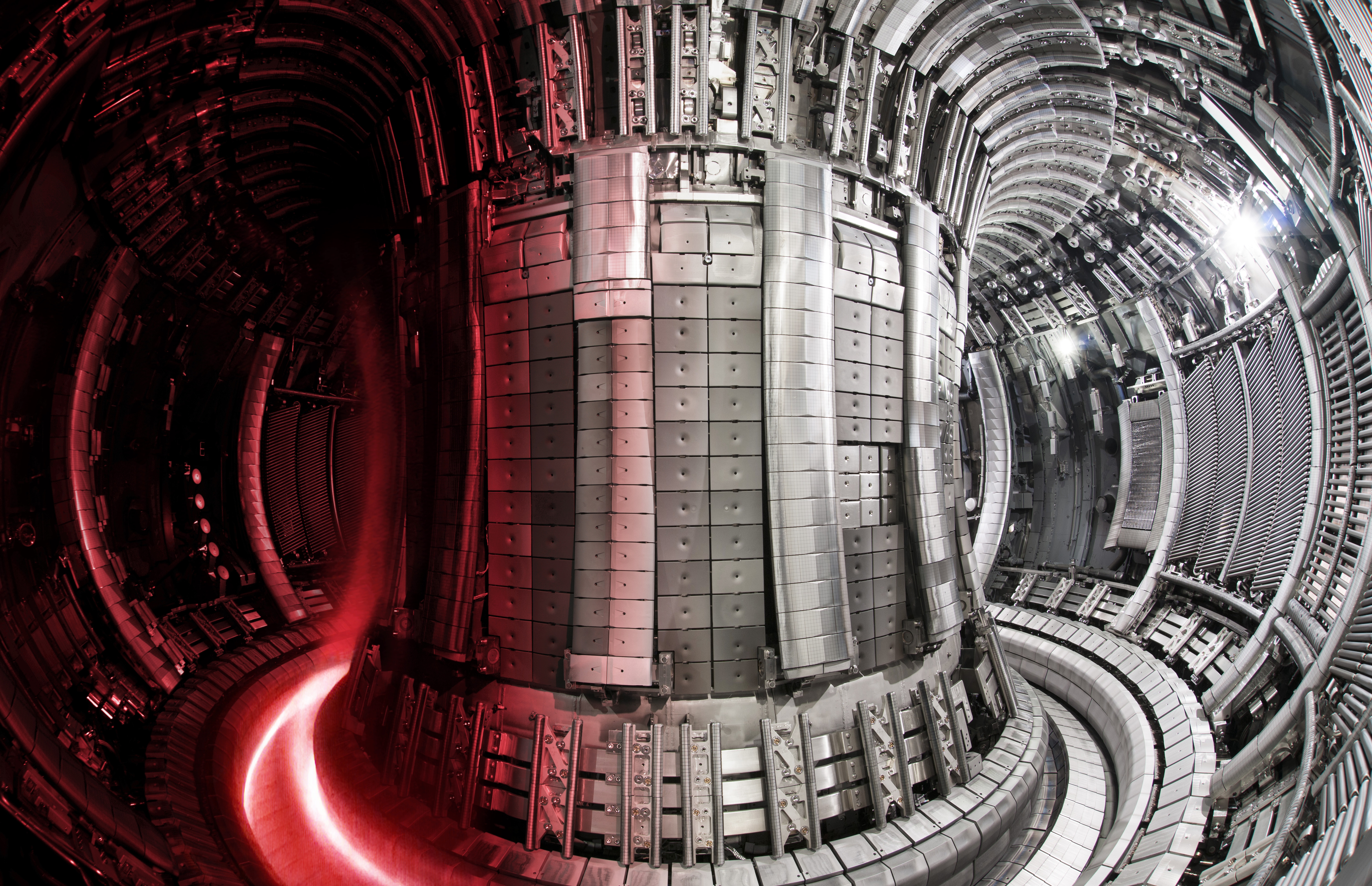Joint European Torus researchers announce nuclear fusion energy record

Image of the interior of the Joint European Torus (JET) with a photo of the plasma donut superimposed on top of it. U.K. ATOMIC ENERGY AUTHORITY/Handout
Feb. 8 (ZFJ) — Joint European Torus (JET) researchers announced on Thursday, Feb. 8, that their tokamak set a new world record of 69.26 megajoules released in controlled nuclear fusion energy on Oct. 3, 2023, at 19:14 GMT.
The record, equivalent to the energy released from burning two kilograms of coal, was set during a single pulse of JET over six seconds with only 0.21 milligrams of fuel. JET’s previous record from 2022 was 59 MJ.
The scientists were also able to reproduce the fusion conditions necessary for the new record in multiple experimental pulses, demonstrating the tokamak’s ability to reliably generate fusion energy with a deuterium-tritium fuel.
“We can reliably create fusion plasmas using the same fuel mixture to be used by commercial fusion energy power plants, showcasing the advanced expertise developed over time,” said Dr. Fernanda Rimini, JET Senior Exploitation Manager and Scientific Operations Leader.
Tokamaks are devices that enclose a donut-shaped cloud of plasma in which fusion reactions occur within a cage of magnetic fields. Transformers generate a flow in the plasma but currently can only operate in pulses, not continuously—a limitation that current research seeks to address.
Current nuclear plants split uranium and plutonium in nuclear fusion. JET instead used a deuterium-tritium fuel. Deuterium and tritium are isotopes of hydrogen, having one and two neutrons respectively, and, when fused together, produce helium and release huge amounts of energy with no carbon emissions. Scientists intend to eventually use this fuel in the international ITER project—the world’s largest fusion experiment—and the DEMO power plant, ITER’s successor.
The EUROfusion consortium of European fusion laboratories used the JET facility, based in the U.K. Atomic Energy Authority’s campus in Culham, U.K., to verify future fusion machines’ operating scenarios using small and medium size European devices. Their ultimate goal is to pave the way for ITER and other future fusion plants.
JET’s fusion energy record occurred during the tokamak’s third and final run of its DTE3 deuterium-tritium experiments, designed to show that ITER’s crucial operating scenarios will still work in a deuterium-tritium environment with many fusion reactions occurring.
“Perhaps even more interesting to me than the record is what we have achieved in terms of operating scenarios for ITER,” said Emmanuel Joffrini, head of EUROfusion’s Tokamak Exploitation Task Force. “Not only did we demonstrate how to soften the harsh heat flowing from the plasma to the exhaust, we also showed in JET how we can get the plasma edge into a stable state, thus preventing bursts of energy reaching the wall.”
“Both techniques are intended to protect the integrity of the walls of future machines. This is the first time that we’ve ever been able to test those scenarios in a deuterium-tritium environment.”
JET concluded its scientific operations at the end of December 2023.
“JET’s final fusion experiment is a fitting swansong after all the groundbreaking work that has gone into the project since 1983,” said U.K. Minister for Nuclear and Networks Andrew Bowie.
The U.S. Department of Energy has been conducting its own fusion experiments, taking a different approach by using extremely powerful lasers to induce fusion. The National Ignition Facility (NIF) at the Lawrence Livermore National Laboratory became the first in the world to reach fusion ignition in December 2022, meaning it gained more energy than was required to initiate fusion—2.05 megajoules in, 3.15 MJ out. NIF has achieved ignition thrice since the December experiment.
References
- EUROfusion - Breaking New Ground: JET Tokamak’s Latest Fusion Energy Record Shows Mastery of Fusion Processes - https://euro-fusion.org/eurofusion-news/dte3record/ (ARCHIVE)
- EUROfusion - New Fusion Energy World Record at JET | Press Conference Highlights - https://www.youtube.com/watch?v=tn-_nAQe3GM
- EUROfusion - New Fusion Energy Record Pulse from JET DTE3 campaign - Pulse #104522 - https://www.youtube.com/watch?v=hQVzroA9qsE
- U.K. Atomic Energy Authority - JET’s final tritium experiments yield new fusion energy record - https://www.gov.uk/government/news/jets-final-tritium-experiments-yield-new-fusion-energy-record (ARCHIVE)
